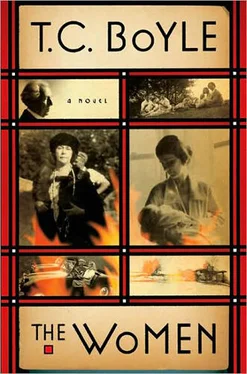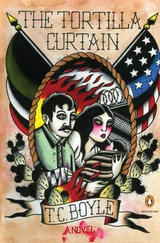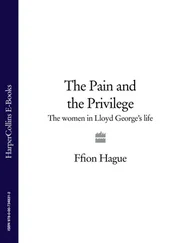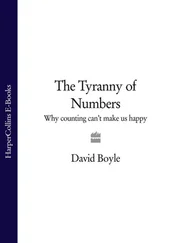136
I was in school in Washington at the time, but my parents had returned to Japan, so the reverberations of the great Kantō earthquake shook the ground beneath my feet nonetheless. All communications were down. Rumors ran wild. I don’t think I slept for a week — impotent, terrified for my reverend parents and my countrymen too. Estimates of the dead ran to 150,000 as the fires reduced the city to cinders. When finally my father’s telegram arrived — their apartment had been spared; they were both uninjured — I went out in a daze to sit by the Potomac and sob into my two cupped hands, living vessel of my relief.
137
There has been a continuing controversy among scholars over the authenticity of this telegram, any number of whom question its provenance, claiming on the evidence that Wrieto-San himself composed it and contrived to have it sent to him from Spring Green rather than Tokyo, as a kind of rhetorical feather in his cap. Both O’Flaherty-San and I reject these claims. In any case, the telegram’s sentiments are incontrovertible and the proof of it was the fact that when the dust cleared the Imperial stood proud and undamaged while all of Tokyo lay in ruins at its feet. Or, rather, its foundations.
138
Pronounced Maymah, though, of course, the associations with the softer, more elemental “Mama” would be irresistible to a Freudian, given Wrieto-San’s deeper needs. And what was, inevitably, to come.
139
From An Autobiography: “The architect absorbed the father in me. . because I never got used to the word nor the idea of being one. . I hated the sound of the word papa. ” It’s not for me to comment, but if only I could hear that sound from my own son’s lips just once more I would give everything I have.
140
Ellen Karolina Sofia Key, 1849–1926. Swedish feminist, writer, educator, radical. Author of such titles as Love and Marriage (1911) and The Woman Movement (1912). Mamah was her acolyte, and, later, her translator. A typical passage from Love and Marriage reads as follows: “Just as alchemy became chemistry and astrology led to astronomy, it is possible that such a reading of signs might prepare the way for what we may call. . erotoplastics: the doctrine of love as a consciously formative art, instead of a blind instinct of procreation.”
141
An astonishing figure, comparable to some $6,500, adjusted for inflation, in 1979 dollars. Both O’Flaherty-San and I have verified the amount from public records, as Wrieto-San was perennially being sued for payment. He once said to me, rather grandly, I think, given the contretemps over the Bearcat, that if one saw first to the luxuries, the necessities would take care of themselves.
142
The George C. Stewart house, 1909.
143
Invented name. History does not reveal to us the actual identity of the unfortunate woman, though a trip to Boulder, Colorado, and a search of the hospital records there might have produced it. Of course, we are comfortable here in Nagoya, O’Flaherty-San and I, and we strive only for a closely invested brand of verisimilitude. Cf. Albert Bleutick, page 23n.
144
Call it Roaring Fork Mines and imagine that he got out — or at least diversified — before the collapse of 1893.
145
Wrieto-San’s behavior in this regard can hardly be viewed as anything less than irresponsible, perhaps even criminal. He seemed always to assume an adversarial relationship with his clients, for whom he felt he had to cheapen himself in some essential way simply to have the means to practice his art, and so if he were to “burn” them, as the saying goes, with cost overruns and advances upon advances, he felt it was only his due. Needless to say, he was abandoning these people and the projects he had no intention of completing except by proxy. What is the expression — take the money and run?
146
As rendered by Katsushika Hokusai, 1760–1849, from his series Thirty-six Views of Mount Fuji . Wrieto-San possessed at least one premier example, Fuji from Honganji Temple in Asakusa, Edo .
147
An eerie adumbration of what Olgivanna would one day face. Cf. page 97.
148
The full panel, inscribed in three-inch-high letters beneath the motto, reads: Good Friend, Around These Hearth-Stones Speak No Evil of Any Creature. In his early years, devoted nineteenth-century aesthete that he was, Wrieto-San was enamored of such aphoristic expressions, as well as antiquated decorative touches like the classical frieze in the entry hall. He soon abandoned them for the cleaner, modern style he pioneered. Which, needless to say, required no verbal amplification.
149
This is, of course, one of Wrieto-San’s most celebrated early designs, added to his residence in 1893 to accommodate his growing brood. It is an impressive, grand space, with its high, barrel-vaulted ceiling, a fireplace surround of Roman brick and brick wainscoting that carries into the window embrasures. I imagine a hearty fire burning in the hearth as a symbolic backdrop to the first Mrs. Wright’s travail.
150
Press conferences. One wonders when they were first conceived of — and wonders too at Wrieto-San’s curious propensity to inflict them carelessly on the women he professed to love.
151
Lloyd Wright, 1890–1978, eventually became an adept and celebrated architect himself, despite having to work in the shadow of his father. He collaborated on and oversaw a number of Wrieto-San’s projects, including Hollyhock House, and designed a great many buildings independently, among the most admired of which are the Samuel-Novarro House in the Hollywood Hills and the Wayfarers Chapel in Palos Verdes, California. If we apprentices often felt the burden of Wrieto-San’s mastery, I can only imagine how heavy that burden must have been for his firstborn son. But then, genius is never light of weight, is it?
152
W.E. Martin, brother of Darwin, who was one of Wrieto-San’s foremost patrons and patsies. Scandalized, Martin’s wife refused to ride with them, and Martin took the back streets, hoping no one would recognize him. Wrieto-San, however, with his hair down to his collar and dressed like “the man on the Quaker Oats package” in knee breeches and drover’s hat, caused a commotion on the platform, crying out in a stentorian voice for his luggage and shouting, “All aboard, all the way to Oak Park by auto!” No skulking for Wrieto-San, no shuffling or pulling a long face — he was the returning hero. Always.
153
Louis H. Sullivan, the great Chicago architect, for whom Wrieto-San worked as a draftsman from 1888 to 1893, after which he was fired for designing homes on a freelance basis (though Wrieto-San, in typical proprietary mode, claims that he quit). At any rate, he was a keen borrower, as has been seen, but at the same time seemed to have difficulty with the concept of repayment.
154
Francis W. Wrieto-San borrowed $10,000 from him to finance his trip to Germany, leaving the bulk of his ukiyo-e collection with him as collateral. He’d built a house for Little in 1902 and Little would become one of his few repeat clients, hiring him to build Northome on Lake Minnetonka, the Minnesota lake that would later provide the scene for Wrieto-San’s arrest in the company of Olgivanna. Wheels within wheels.
155
Edwin was suing for divorce on grounds of desertion. State law prescribed a two-year absence before the divorce could become final. Since Kitty refused to grant Wrieto-San a divorce on any grounds, Mamah must have felt she had no choice but to remain behind in Europe, far from the prying eyes of the American press. But far from her lover too. And her children. And her life.
156
We had a talker among the apprentices in the mid-thirties, a man just out of college by the name of Ken Milligan. He talked so compulsively — and distractingly — that Wrieto-San insisted he work alone. One morning, Wrieto-San appeared on the site with a local plasterer, who happened to be deaf, and, in his sly way, singled out Ken to work with him. Three days later Ken came into dinner, looked up from his plate and announced to the table at large, “You know, I don’t think that new guy understands a word I say — what is he, a Polack or something?”
Читать дальше












